Published Dec 30, 2021
The Promise of Sisko's New Orleans
DS9 shows us that New Orleans will thrive at 600 years old, but we have work to do in the present to get it there.
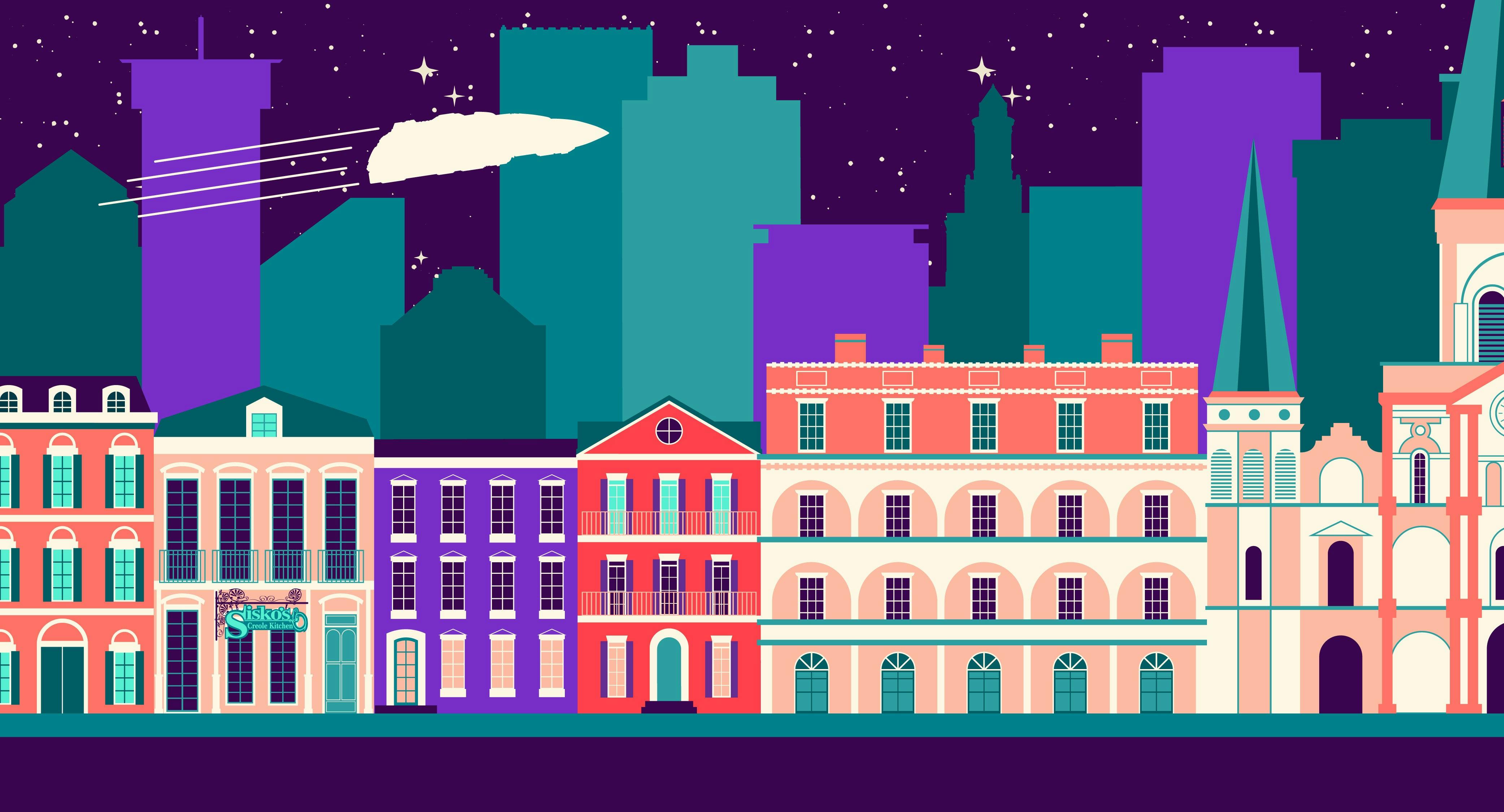
StarTrek.com
Star Trek has offered many exciting visions of the future over the last 53 years. The most apparent ones are technological: faster-than-light travel, teleportation, and handheld long-distance communicators. These have an obvious appeal and have inspired real-world scientists. Perhaps even more attractive to many viewers, though, are the social innovations: the elimination of poverty and old prejudices, and a driving commitment to a grand shared future.Some of the ways this has played out in the different Star Trek media have been fairly subtle. For instance, Deep Space Nine revealed that its central character, Benjamin Sisko, was from New Orleans, Louisiana, where his father Joseph ran a Creole restaurant. This was only an offhand mention early on, but it gained greater significance once the plot actually took viewers to Earth and gave us a few brief views of the Big Easy in the 24th Century. Even then, the city was mainly just a backdrop for the interstellar action and personal drama that were the main focus of the stories. However, real-world developments since those episodes aired give New Orleans’ appearance in Deep Space Nine a haunting resonance that is no less optimistic than the other appealing developments of the Star Trek future. Realizing just why, though, requires us to take a hard look at the tensions between futurist fiction and modern reality.
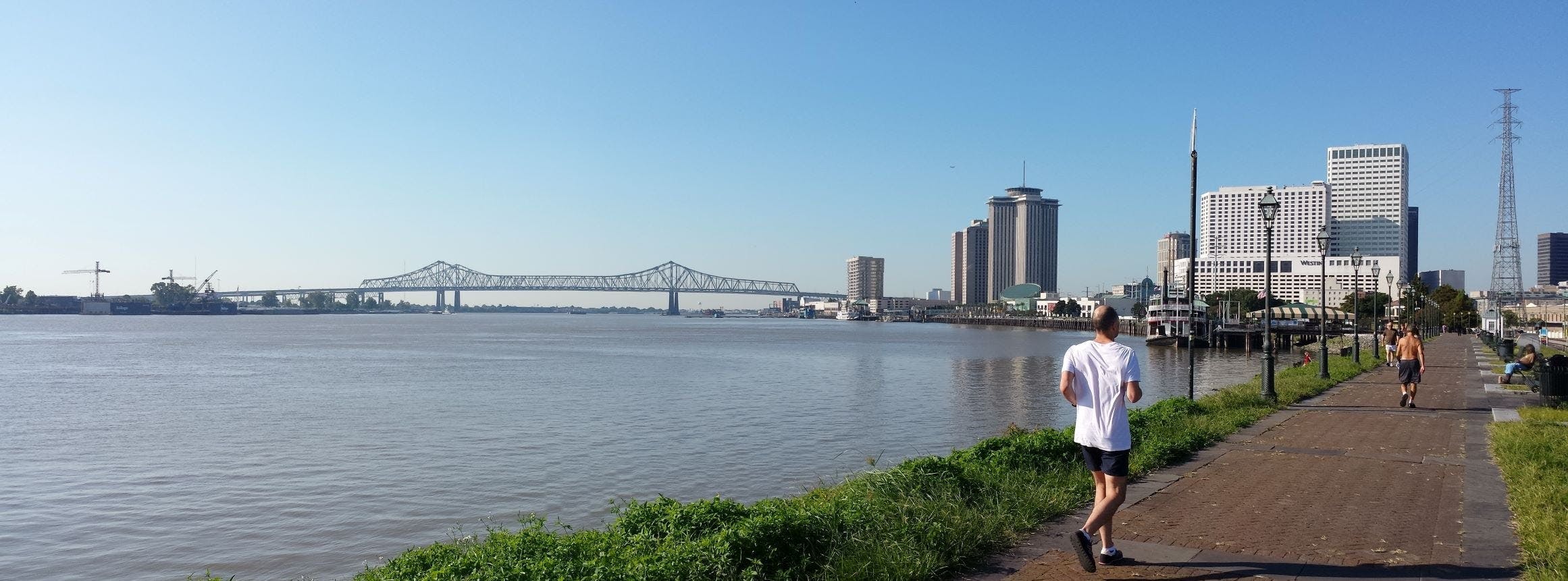
Robert Lloyd
In 2018, New Orleans celebrated its 300th anniversary. In the eyes of many, especially as the city experiences a new round of devastating flooding, there is a good chance it will not survive to see 400.
In 2005, Hurricane Katrina struck the Gulf Coast, and the resulting failure of levees and floodwalls around New Orleans caused 80% of the city to be flooded. The apocalyptic images of the disaster made international news, as did subsequent investigations into the cause: in short, the city’s levees and floodwalls were not up to the task of effectively protecting it from even a medium-strength hurricane and the resulting storm surge. Several lessons were learned, and costly improvements to New Orleans’ flood protection systems made. Nevertheless, the recovery, in many ways, is still ongoing. Statements made in 2019 by the US Army Corps of Engineers (which has authority over many waterways and water control structures in the country) indicate that even the recent, highly expensive new installations will not be able to keep up with rising sea levels and growing storm intensity – both the effects of global, human-caused climate change.
New Orleans worked its way into this situation gradually over its centuries of existence. The city was founded in 1718 by French colonizers on land already long occupied and used by Indigenous people like the Chitimacha, Natchez, and Houma. The raised strip of land alongside the Mississippi River was seized by the French, who found it ideal for establishing control over access to the river and the shipping opportunities it promised. Other nearby land had proven too low and swampy for the purpose.
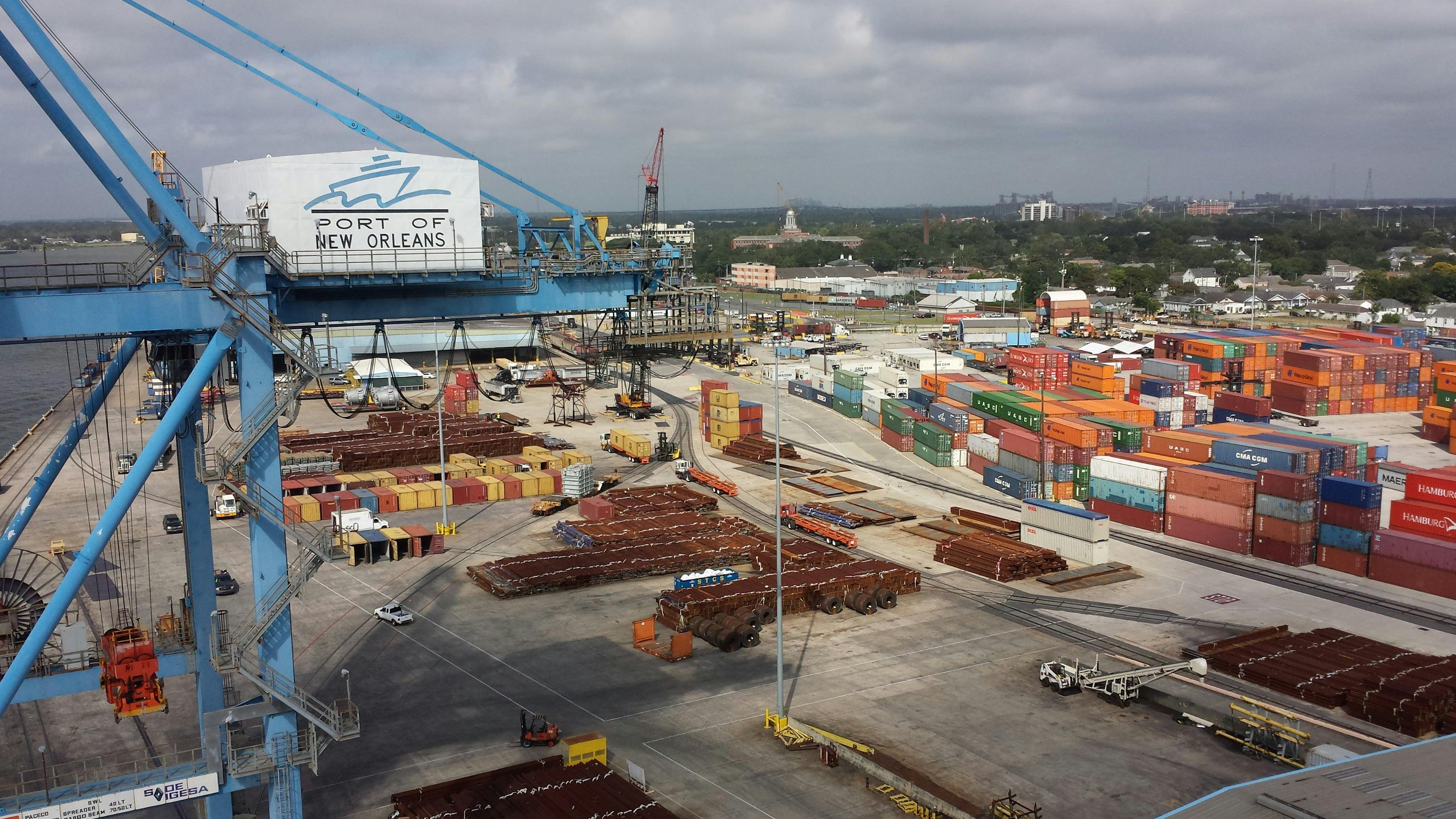
Robert Lloyd
As the settlement grew into a port town, it attracted people from other areas, drawn by the promise of work and trade. Living space had to expand to accommodate these new arrivals. Surrounding wetlands were drained, and water walled off with levees. This process continued over the decades as New Orleans grew. Pumps were installed to quicken the drainage process. By the end of the 20th Century, the original settlement – now known as the French Quarter – was only a tiny fraction of the size of the total inhabited area of New Orleans and its suburbs. Today, the metropolitan area is surrounded by water – the Mississippi, Lake Pontchartrain, and adjacent wetlands – and roughly 50 percent of its area is below sea level. Large portions of the city are sinking still further in elevation as the installed pumps pull groundwater out of the soil. What’s more, the southern coast of Louisiana is gradually eroding away, thanks to rising sea levels, the canals cut through the coastal wetlands by oil and gas companies, and human alteration of the Mississippi’s natural systems of seasonal rises and sediment deposition. This means that less and less land and vegetation remain to protect New Orleans — as well as its surrounding smaller communities — from the threat of storm-related flooding.
But it doesn’t take a hurricane to soak New Orleans. The city often experiences localized flooding just from a heavy rainstorm, thanks to its low elevation and ever-present humidity. The problem is worsened by the fact that the pumps relied upon to move water from the city fail frequently.
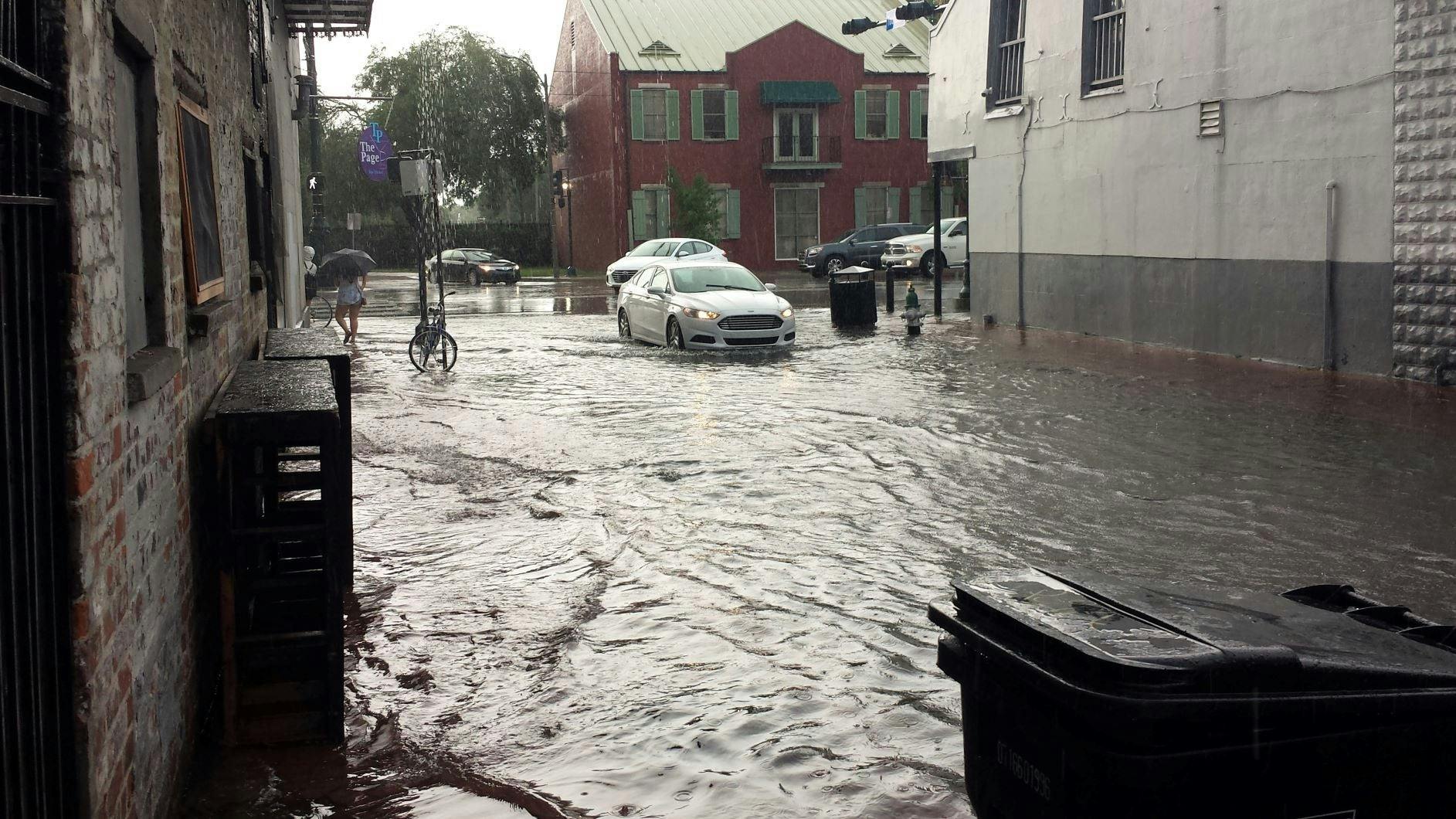
Robert Lloyd
In addition to the problems exacerbated by Climate change, poverty and crime have come to be endemic to the city. Although it remains a popular tourist destination, its national reputation has also suffered from the intractable nature of those issues, as well as the fact that parts of the metropolitan area (including those most damaged by Katrina) remain in relatively poor repair, or simply run down. However, this has not stopped moneyed newcomers from moving into the city, drawn by the relatively low cost of living and the easygoing lifestyle. No matter how well-intentioned these arrivals may be (or how badly the city needs to rebuild its population and tax base), many longtime residents are being priced out of the city. The rise of short-term rental properties (largely serving the tourist trade) is accelerating that process. Personal ties and local cultural traditions are eroding as more and more people are forced to move to the suburbs or even other cities.
How could any of this have been on the minds of the Deep Space Nine production team when they took us the Big Easy of the 24th Century,? It would have required a supernatural amount of foresight. Still, for those of us who appreciate Star Trek’s optimistic vision of the future, we can take heart from the idea that New Orleans has the chance to overcome not only current challenges, but to thrive even 300 years from now. Yet how might this happen? How can we change the current state of things in any meaningful way to ensure New Orleans’ survival?
First of all, there’s nothing to suggest that the Siskos’ home is not the city which currently exists – we have no reason to assume this is a “New New Orleans” established in, possibly, a safer location. That being the case, New Orleans appears to be one of the rare major cities to have survived World War III, as referenced in Star Trek: First Contact and a number of TV episodes. It’s a safe bet to assume that the city also successfully weathered any number of hurricanes over that period! But like many cities that experience war or disaster, it could have suffered significant devastation, followed by rebuilding. What might be the state of New Orleans in the 24th Century, compared to the 21st?
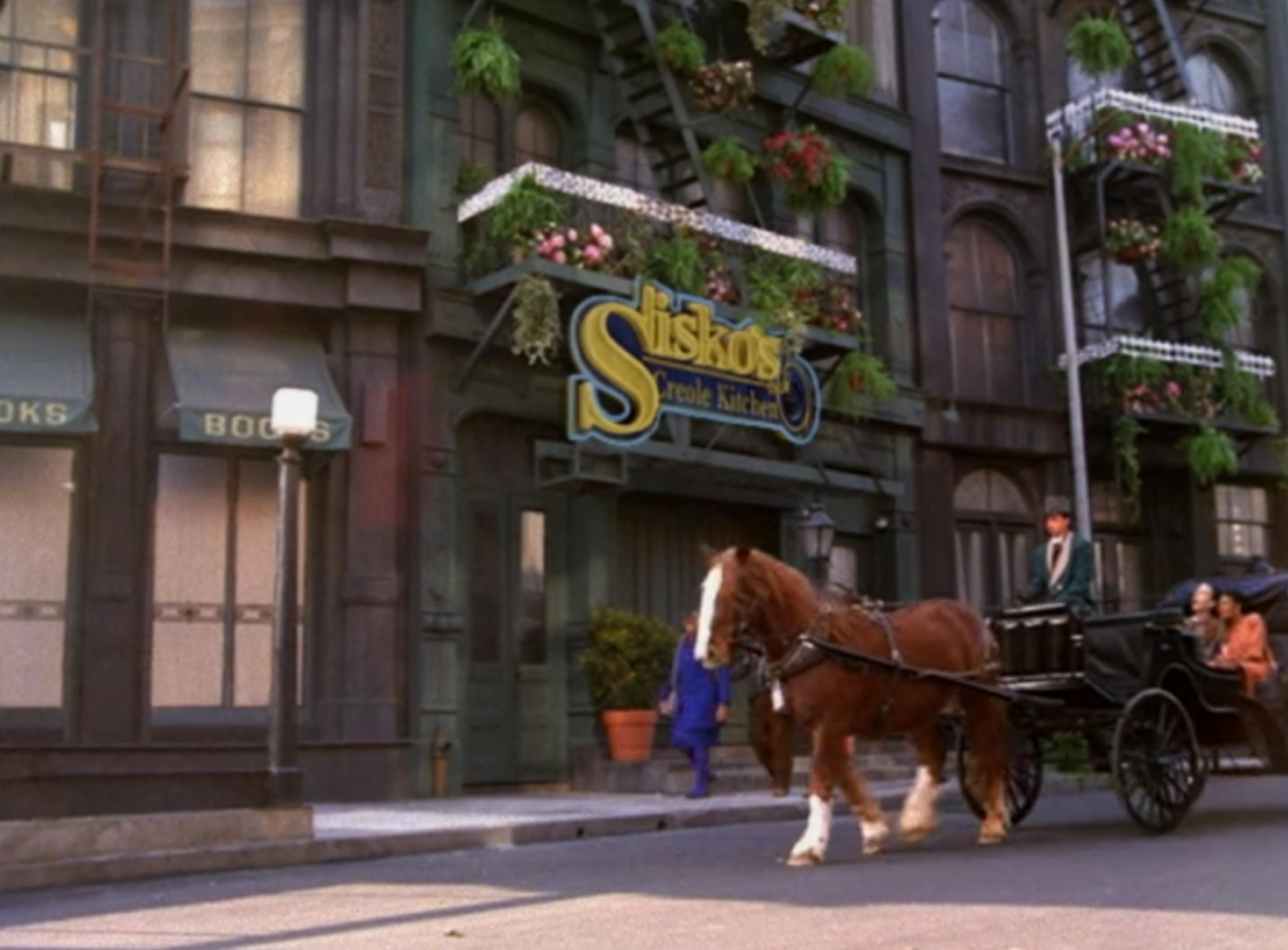
StarTrek.com
It’s tough to tell from the TV series alone – we are shown only tiny portions of the city onscreen, and glean a few other details from dialogue. We know that Sisko’s Creole Kitchen is somewhere in the French Quarter, which is located on the high ground near the river and is one of the parts of the city most likely to escape severe flooding. The episodes “Homefront”, “Paradise Lost,” and “Image in the Sand” show us some glimpses of the street and other buildings outside the restaurant – the Old World architecture and greenery-draped balconies familiar to residents and tourists seem to still be present in the future (unless they are recreations, which is always a possibility).
A couple of New Orleans landmarks are also mentioned in Deep Space Nine. In “Image in the Sand,” Joseph mentions meeting Ben’s mother in Jackson Square, a park also in the French Quarter. In the same episode, Jake mentions himself and Joseph planning to go to Armstrong Park, not too far from the Quarter, to listen to music. Both these excursions seem more reasonable than Joseph’s suggestion to his son in “Homefront” that they take a “stroll” to Audubon Park in the hour Ben has free before returning to Starfleet Headquarters – located on higher ground, Audubon Park is some six miles from the French Quarter! However, the mention does help us pin another aspect of present-day New Orleans to its future version. Beyond that, we can speculate that Joseph and Benjamin might be able to catch some unmentioned future form of high-speed urban transport to the park itself, where they would then take their “stroll”.
We can get a little more information from non-TV media. The book Typhon Pact: Rough Beasts of Empire includes the death of Joseph Sisko, and describes the route of his jazz funeral, a beloved New Orleans tradition familiar even to people who have never been to the city. The procession travels down St. Charles and Nashville Avenues and up Soniat Street, moving through parts of the Uptown and Freret neighborhoods on its way to the Katrina Memorial – areas that were flooded after that hurricane and could be again, temporarily or permanently, in the event of another widespread failure of the city’s water management infrastructure. Although this leaves huge areas of New Orleans unaccounted for, most of them currently packed with densely gridded streets lined with shotgun houses, the fact that these places still exist and can be traversed on foot in the time of Deep Space Nine does suggest the ongoing maintenance of the city and the systems that protect and support it. (The book also mentions New Orleans hosting a maglev train, indicating improvements in local transportation too – maybe that’s how the Siskos got to Audubon Park?)
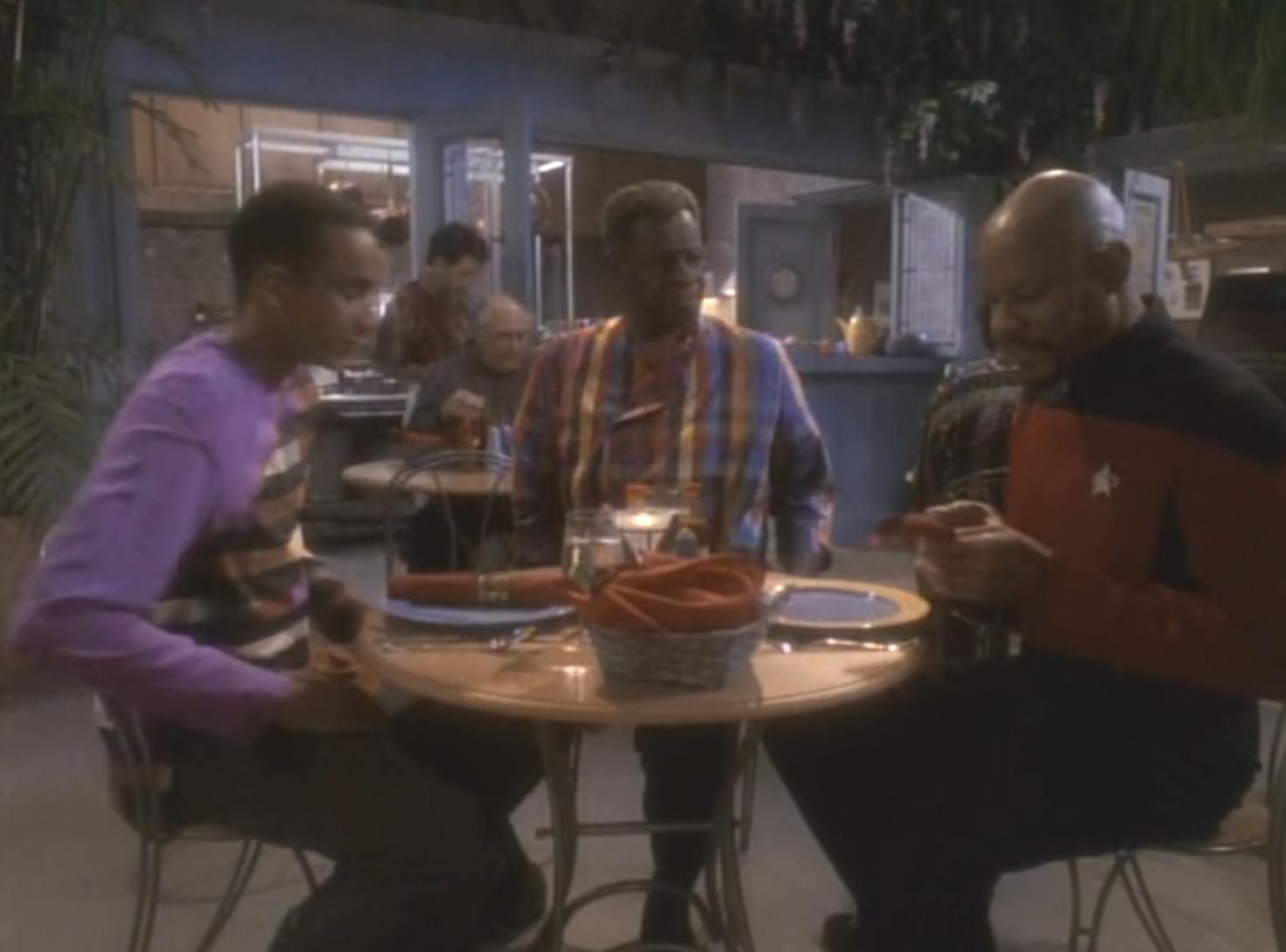
StarTrek.com
Back on TV, the episode “The Visitor” shows us a possible future in which Jake is living in “the bayou.” His exact location in Louisiana is unspecified, but it’s likely near New Orleans, since he moved there as an adult to be closer to his grandfather. So, besides the defenses for the city itself, surrounding areas are still habitable despite the coastal erosion. We know that the 24th Century offers powerful geoengineering techniques (the Next Generation episode “Family” tells us there is even a project in the works to lift a new continent from the sea), and it’s worth considering whether future science, possibly technologies yet to be invented, are needed to save our own New Orleans.There are plans in motion already. Regular diversions of sediment-laden water from the Mississippi to coastal wetlands, strategic vegetation plantings to catch and anchor soil, and other techniques are being employed to try to rebuild the coast, or at least slow its disappearance. Following Katrina, a team of architects, engineers, and urban planners worked together to generate the Urban Water Plan – a sweeping, holistic redesign of the city’s water management systems, intended to “let the water in” via extended canal systems, urban wetlands, and other features, rather than relying so completely on unsustainable levees and floodwalls to hold it out. Seeking to enable engagement with the area’s watery nature, rather than denial of it, the Urban Water Plan is ambitious and innovative, but would also be expensive. Although it was introduced in 2013, to date only fairly small, piecemeal drainage improvements have begun to be implemented.
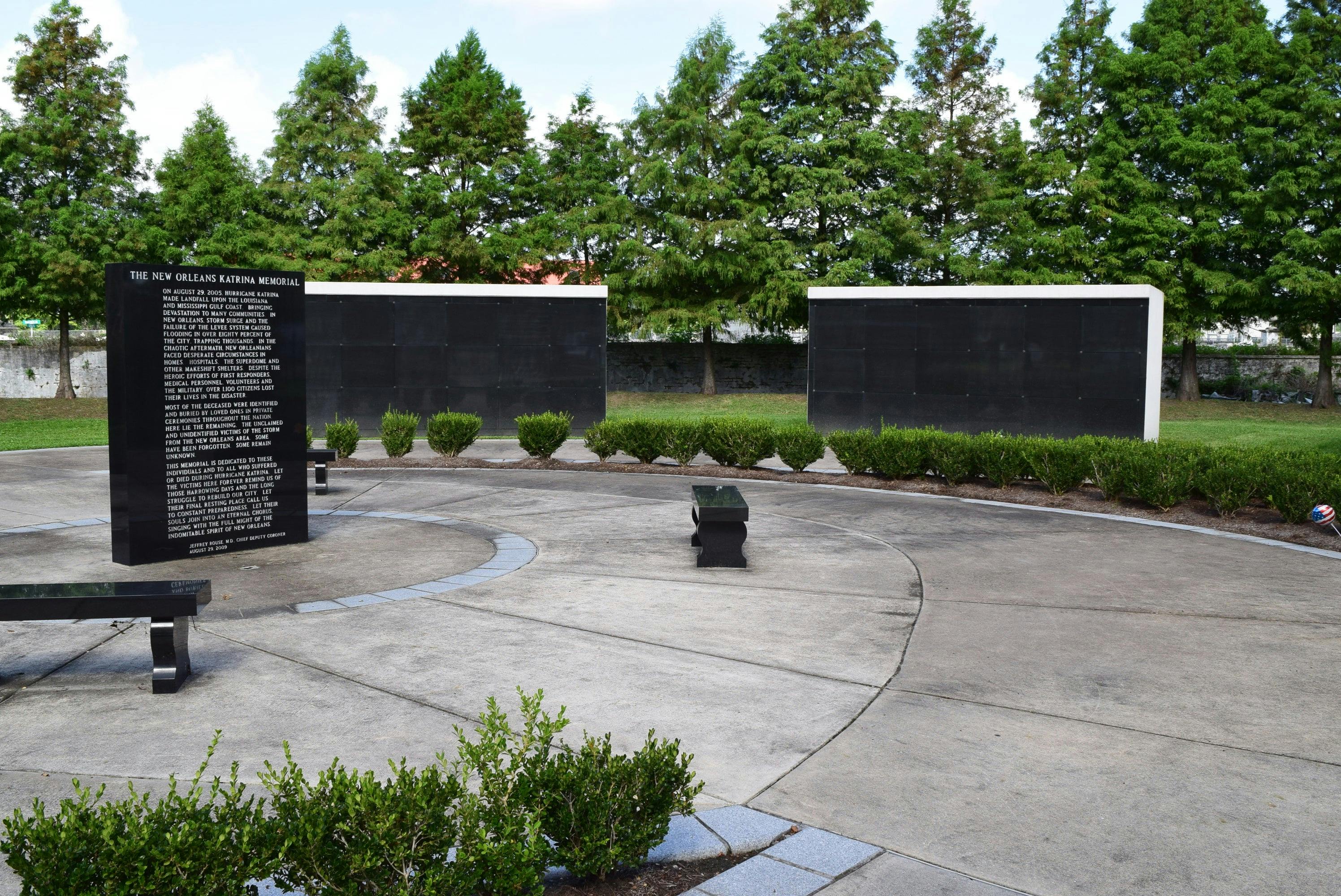
Robert Lloyd
As important as the structure of New Orleans to its future, though, are less tangible factors. Even if Star Trek doesn’t tell us much about the physical nature of its future New Orleans, it does have some things to say about the social aspects of the city and the world it exists in. Joseph Sisko being specifically a Creole chef, anchors the Siskos with detail grounded in the real world. Dishes like gumbo (referenced in “Homefront”) and etouffee (“Image in the Sand”) appear to still be staples of New Orleans eating. Joseph’s complaint in “Homefront” that his doctor “can’t tell the difference between Creole food and Cajun food” suggests a commitment to preserving the standards of such traditions and the distinctions between them, but he’s also not opposed to attempting a Creole/Ferengi fusion dish, suggesting in the same story he might try cooking tube grubs with a remoulade!
That blend of the traditional with a willingness to experiment is also at the heart of jazz music, which has its origins in New Orleans and is also seen to still be treasured in the 24th Century – aside from the Siskos, we even see Riker playing it on the trombone in the Next Generation story “11001001” (in a holodeck recreation of a Bourbon Street bar, no less!). Other clues, like the local architecture, and the indications in “Paradise Lost” that the Sisko restaurant doesn’t use replicators, lend further credence to the preservation of tradition even in a world of technological wonders and the influence of cultures from light-years away. This suggests that the social structure of Earth in the future of Star Trek allows people the consideration, and even the support, to go on doing valued work in their own way, even when that work and the methods of doing it might seem at first look to be inefficient. Sisko’s Creole Kitchen is clearly valued by its community, judging from the number of customers we see.
It also must not be overlooked that many of the celebrated New Orleans customs mentioned here – Creole cuisine, jazz music and funeral processions – are the products first and foremost of the city’s Black residents, with strong links to African traditions. African-Americans in fact represent a majority of the New Orleans population, and have for decades. These truths are often glossed over or omitted entirely by businesses, tourism agencies, and other entities trading on New Orleans history and culture.
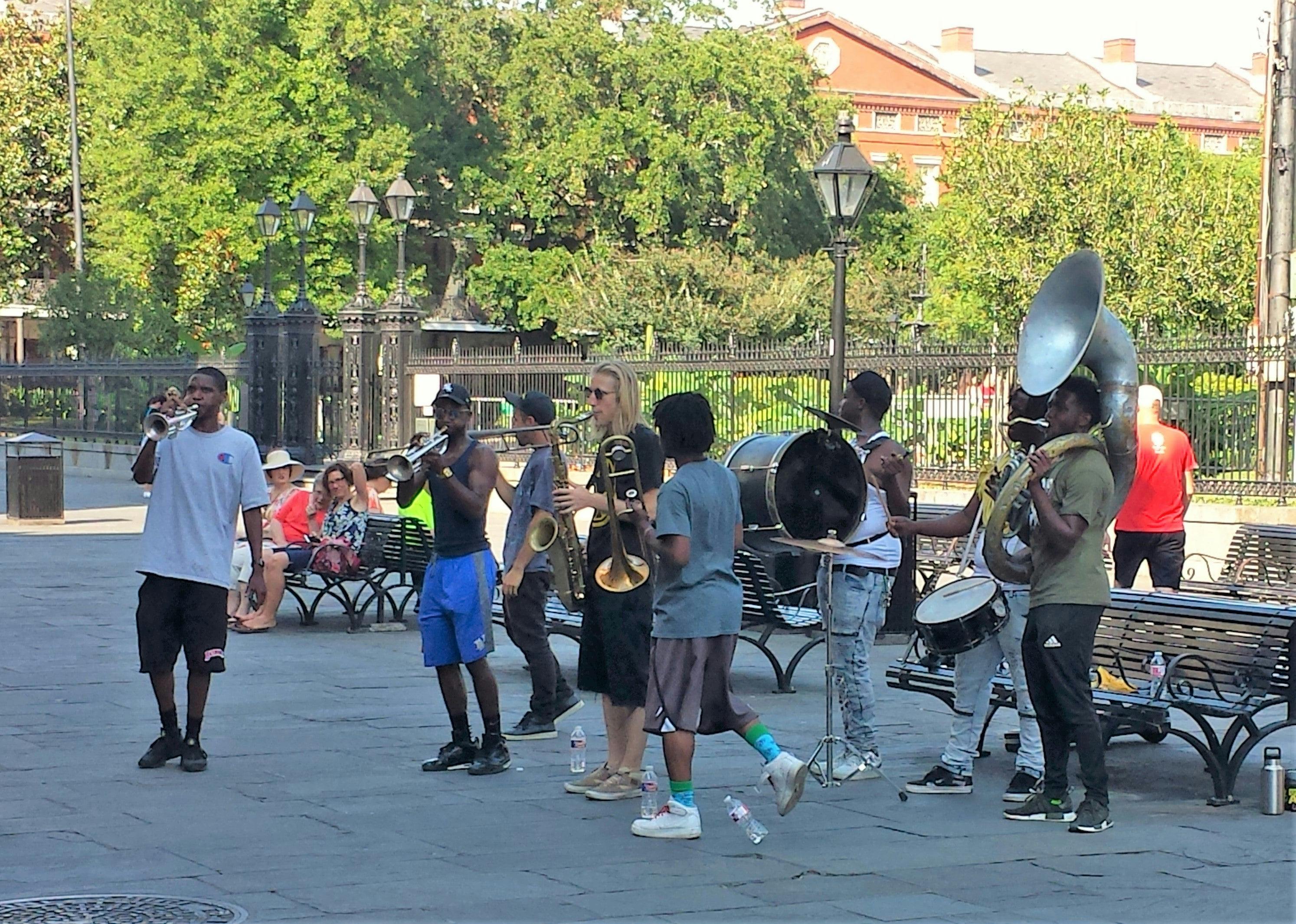
Robert Lloyd
Although Star Trek presents racism among humans as a thing of the past, that does not mean the history of racism and the unequal power relationships it represents will be unremembered in the 24th Century. In fact, race is very much on Ben Sisko’s mind when he voices his discomfort with Vic’s, the mid-20th Century Las Vegas holodeck program, in “Badda-Bing, Badda-Bang”. Based on his speech in that episode, the Siskos’ identity as Black men is still very real in the 24th Century, even if it does not compromise their equal status in Earth society. The presentations of Joseph Sisko operating a Creole restaurant, and his life celebrated with a jazz funeral, indicate that not only are iconic local traditions still alive in the New Orleans of Deep Space Nine, but the city’s Black residents maintain some ownership of them, and are honored for that fact – one more piece of the picture of a more equal and just society that Star Trek sets out to portray throughout its various incarnations.
Ultimately, just as Star Trek doesn’t have much to say about how to really build a warp drive, it can’t tell us just how, 300 years from now, New Orleans might have overcome its infrastructural and social challenges. What it can do very well, though, is what Trek has always done: inspire.
Through its appearance in Deep Space Nine, we can take a good, hard look at New Orleans as it is, and think about what will be required not only to preserve its best aspects – its beauty, its hospitality, its rich blend of traditions from around the world - for people in the future to enjoy, but to give it and its residents the support and the drive to realize still further greatness. Doing so will require a collective will to execute massive and transformative projects such as the restoration of the Louisiana Coast and the re-engineering of the water infrastructure – and to do so without concern about monetary cost. It will take a willingness to let people live their lives and chart their destinies in an atmosphere of true equality and respect. If New Orleans can overcome physical rigors, and navigate social difficulties to allow people to live in harmony and shared prosperity, it will live on to stand as a beautiful exemplar for what Star Trek is all about.
Robert L. Lloyd is a PhD student at Georgia State University’s Urban Studies Institute, in Atlanta. He loves both Star Trek and New Orleans deeply and unconditionally.

